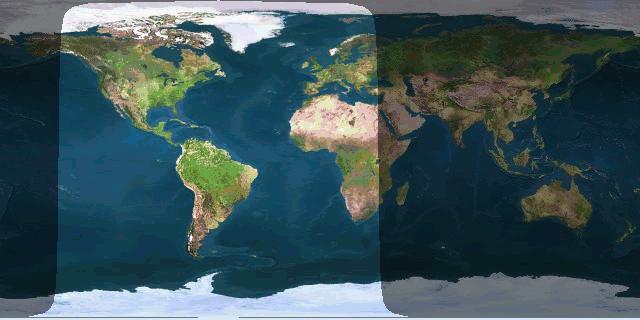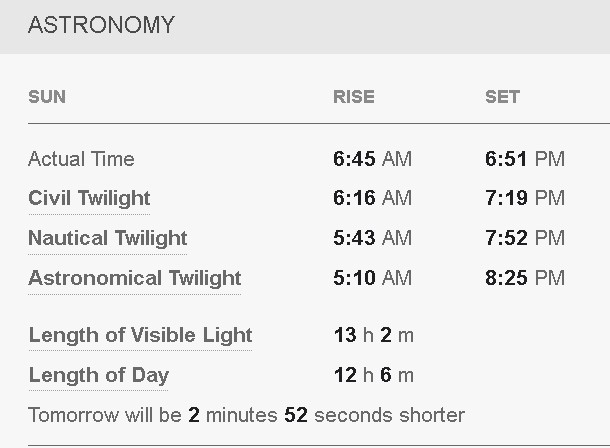By Jock Elliott, KB2GOM
According to https://dx.qsl.net/propagation/greyline.html: (the image above comes from them)
The “grey line” is a band around the Earth that separates daylight from darkness. Propagation along the grey line is very efficient. One major reason for this is that the D layer, The “grey line” is a band around the Earth that separates daylight from darkness. Propagation along the grey line is very efficient. One major reason for this is that the D layer, which absorbs HF signals, disappears rapidly on the sunset side of the grey line, and it has not yet built upon the sunrise side. Ham radio operators and shortwave listeners can optimize long distance communications to various areas of the world by monitoring this band as it moves around the globe. which absorbs HF signals, disappears rapidly on the sunset side of the grey line, and it has not yet built upon the sunrise side. Ham radio operators and shortwave listeners can optimize long distance communications to various areas of the world by monitoring this band as it moves around the globe.
Elliott’s short version: Some funky stuff can happen with propagation when the grey line is passing through your location.
So let’s have some fun for a couple of hours chasing MW DX along the grey line.
Here are the rules:
- Frequency range is the medium wave band: 520-1710 kHz
- From one hour before Civil Twilight your local time on Saturday, October 14, to one hour after Civil Twilight at your location.
- Any radio with any antenna, but must be the radio at your location (no using remote internet radios)
- The listener must hear the signal in real time
- The stations must be ID’ed by listening to the signal.
- Your report should include:
- Your name (or Internet handle)
- Your receiver and antenna (stay with the same setup from beginning to end; if you use multiple setups, provide a separate report for each).
- Your location
- The time, the frequency, and the ID of each station heard
- The total mileage of your top five most distant stations.
A final point: this is not a contest; it is a challenge. The reward for every participant will be fun and fellowship.
You can find when Civil Twilight begins at your location by visiting www.wunderground.com . Enter your location, click on “Full Forecast” then scroll down to the “Astronomy” section.



Jock….Humm….I am new to all this….but does our report go somewhere or just to see what we can do?? Either way, I look forward to my early rise-n-shine…. 😉
73, Jim / AC3B
“Any radio with any antenna”
First things first. Thanks Jock for coming up with this challenge.
Second, upon reading this I found myself reaching for my C.Crane CC Radio 2E coupled with my tunable MW loop antenna – the Tecsun AN-100. That should be a fair fight– oops, did I say fight, no, meant to say contest – no, scratch that, let’s get back on script – challenge!
Should be interesting, though. In the past, I’ve easily ID’ed stations as far away as 850 miles from my QTH in SW Ohio. Now, with enhanced solar activity, could stations as far away as 1,000 miles away (or farther) be within range? Stay tuned.
Roger,
I look forward to your participation . . . should be fun.
Cheers, Jock
https://solarsystem.nasa.gov/news/2370/the-impact-of-solar-eclipses-on-the-structure-and-dynamics-of-earths-upper-atmosphere/#:~:text=Propagation%20Effects%3A%20The%20altered%20ionospheric,shortwave%20and%20satellite%20communication%20systems.
You may find this map to be useful.
It shows the Maximum Usable Frequency in real time:
https://prop.kc2g.com/
RTC,
Thanks!
Cheers, Jock
After reading about this good idea from Jock – a question popped into my brain uninvited: Has an AM station ever done a listener DX power test in the Grayline/Sunrise/Sunset time slot?
I am thinking along the lines of the Ham radio “Beacons” that have a time schedule where they start at 0.1 watt, then 1 watt, then 10 watts, then 100 watts.
Has an AM Medium Wave commercial station ever advertised to listeners that they are going to do step increases of transmitter power during the Greyline, and invite mailed in recordings, written reports, etc?
Personally I have wondered over what distances HD AM all digital format transmissions could be received on 820 from Maryland if WBAP Texas would do a period of off air maintenance.
Hank,
I have no idea whether such a test has been done. Perhaps another reader knows.
Cheers, Jock
Very interesting Jock,Thanks.I am a bit of a night-owl,since retirement and starting at dusk sometimes I spin the knobs with the help of some java,continue on into the wee hours after the big apple quiets down.Depending on where people live,there is going to be a Mid-Day Solar Eclipse Oct 14,2023.Since exact Times vary and the actual percentage of sun coverage also varies with your location,it would be wise to google your location to find out. In the N.East States North America the max is around 1PM with 37 percent coverage and coverage in Montgomery,Texas is 90 percent of the sun , starting around 11:30 AM.That should be pretty awesome around mid day,if the cloud cover cooperates.Don’t forget your eclipse protective glasses (inexpensive), Try spinning some radio knobs,if you tire of viewing the spectacle and see if you notice any differences in your favorite station reception or explore “New Finds” ENJOY !!!
Jack,
That’s a very interesting idea!
Cheers, Jock
https://solarsystem.nasa.gov/news/2370/the-impact-of-solar-eclipses-on-the-structure-and-dynamics-of-earths-upper-atmosphere/#:~:text=Propagation%20Effects%3A%20The%20altered%20ionospheric,shortwave%20and%20satellite%20communication%20systems. IT WILL BE A HEAVY KNOB TURNING “DAY OF THE ECLIPSE”
So does this mean, Jack, that the Great Medium Wave Grey Line Challenge will be even more interesting than I originally anticipated? Or should it be re-scheduled for another day?
It’s “UP IN THE AIR ” Jock ! like a mug that’s half full or half empty,who can say ? October 14,2023 might be a very unusual day,whether transmitting or just listening to a radio,any radio. Full Speed Ahead on the Grey Line but use your seat belt
Definitions of astronomical events such as sunrise, sunset etc
https://www.ga.gov.au/scientific-topics/astronomical/astronomical-definitions